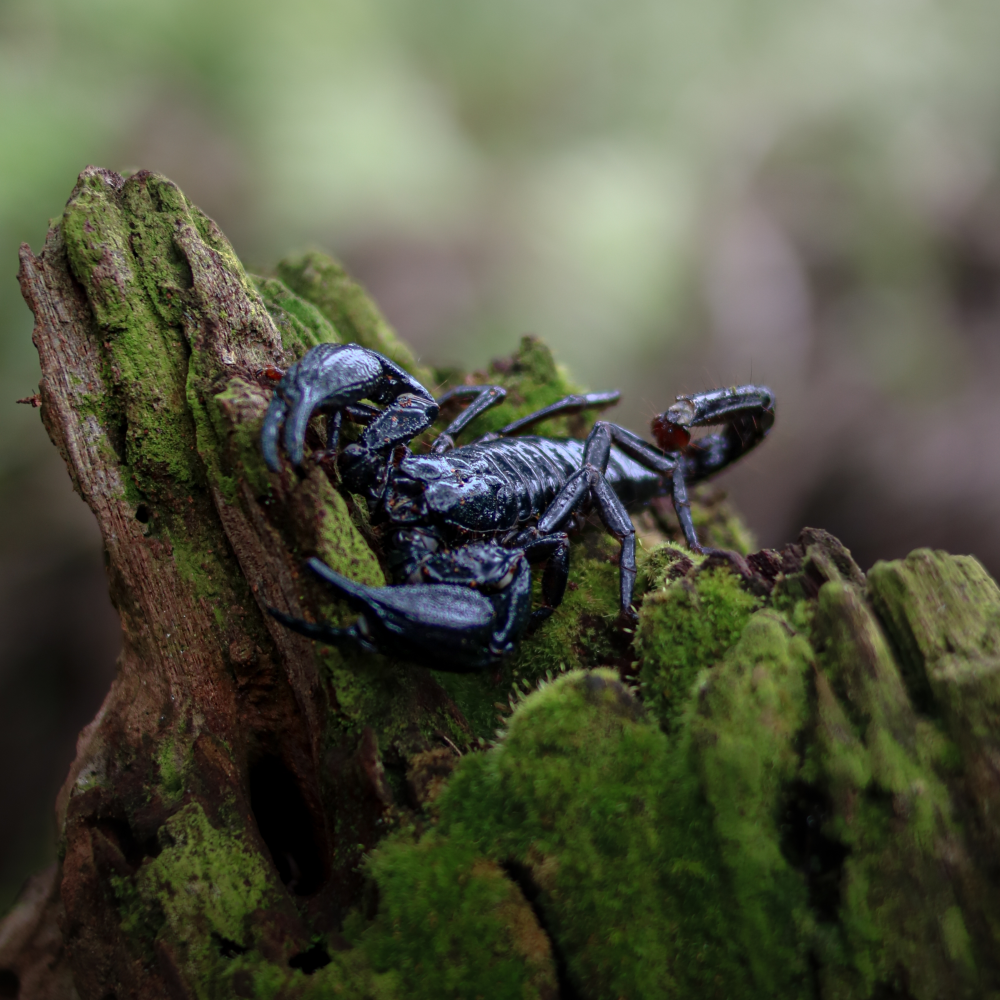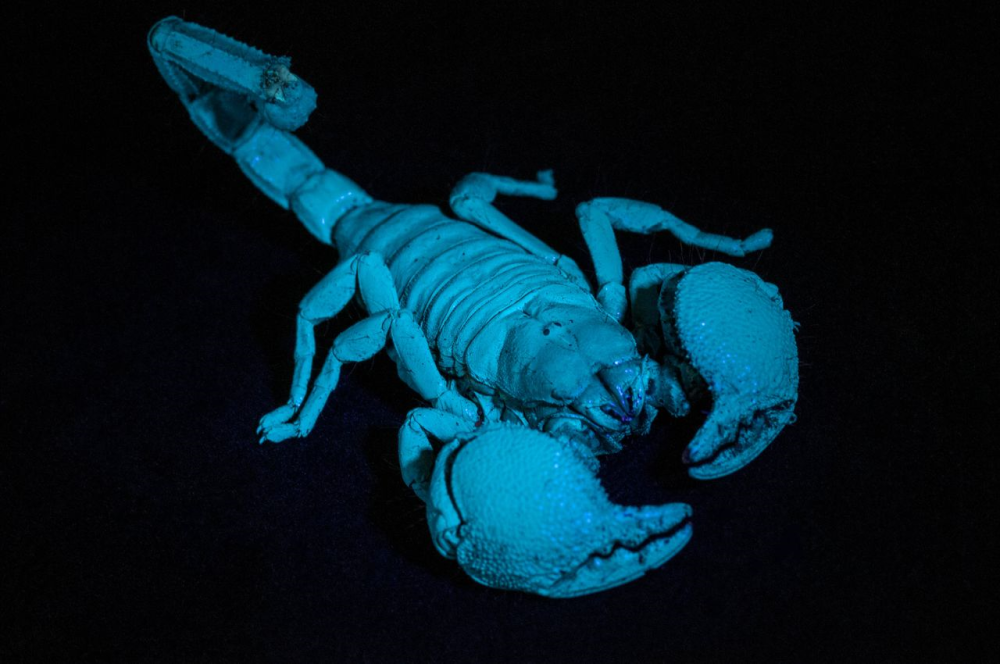The emperor scorpion, Pandinus imperator, is one of the largest scorpions in the world. At a whopping 20 centimeters (7.9 inches), it carries around a huge set of pincers that can crush a mouse to death.
It figures that such an arachnid might be hiding a few tricks up its enormous sleeves, one of which can be revealed with a blacklight that makes the emperor scorpion light up like a Halloween decoration. So, where does this magnificent ruler call home?
The emperor scorpion: habitat
The emperor scorpion lives in West Africa, where it can be found in rainforest and savanna habitats. They are burrowing creatures that hide out beneath soil and rocks during the day until nightfall, and then it’s time to hunt.

There’s only one scorpion bigger than the emperor scorpion.
Image credit: TaufikPho/Shutterstock.com
The emperor scorpion: diet
The diet and hunting technique of emperor scorpions changes throughout their life cycle. When they are born – and yes, scorpions give birth rather than laying eggs – the emperor scorpion is pearly white. As babies, they’re carried on their mother’s back until their first molt, and then they’re on their own.
Young scorpions will use their stingers to attack prey – typically invertebrates – but as they get older, their pincers get bigger. Eventually, the stinger is superfluous compared to the crushing power of their claws, and adults will exclusively hunt by grasping and pinching prey to death, rather than stinging. Termites make up much of their diet, but they can also branch out to a few small vertebrates, including mammals and reptiles.

The emperor scorpion is biofluorescent.
The emperor scorpion: biofluorescence
Beyond its enormous size, it’s also a peculiar critter for the fact that it glows a spooky greenish-blue hue when under UV light. This is known as biofluorescence, and it’s a nifty trick of the light whereby a living thing absorbs light and then re-emits it at a longer wavelength. It differs from bioluminescence, the glowing you see in deep-sea creatures that’s facilitated by enzymes.
For biofluorescence, it all comes down to the right wavelength of incoming light hitting and exciting molecules known as fluorophores, which then re-emit light that’s seen as fluorescence. The “bio” bit simply refers to the fact it’s coming from a living thing.
We’ve already discovered all sorts of biofluorescent animals, including amphibians, eels, and platypuses. It’s a glowing and growing area of science, and you can get involved in finding new ones. All you need is a blacklight and enthusiasm.
Source Link: The Fluorescent Emperor Scorpion Crushes Prey To Death With Its Fearsome Claws